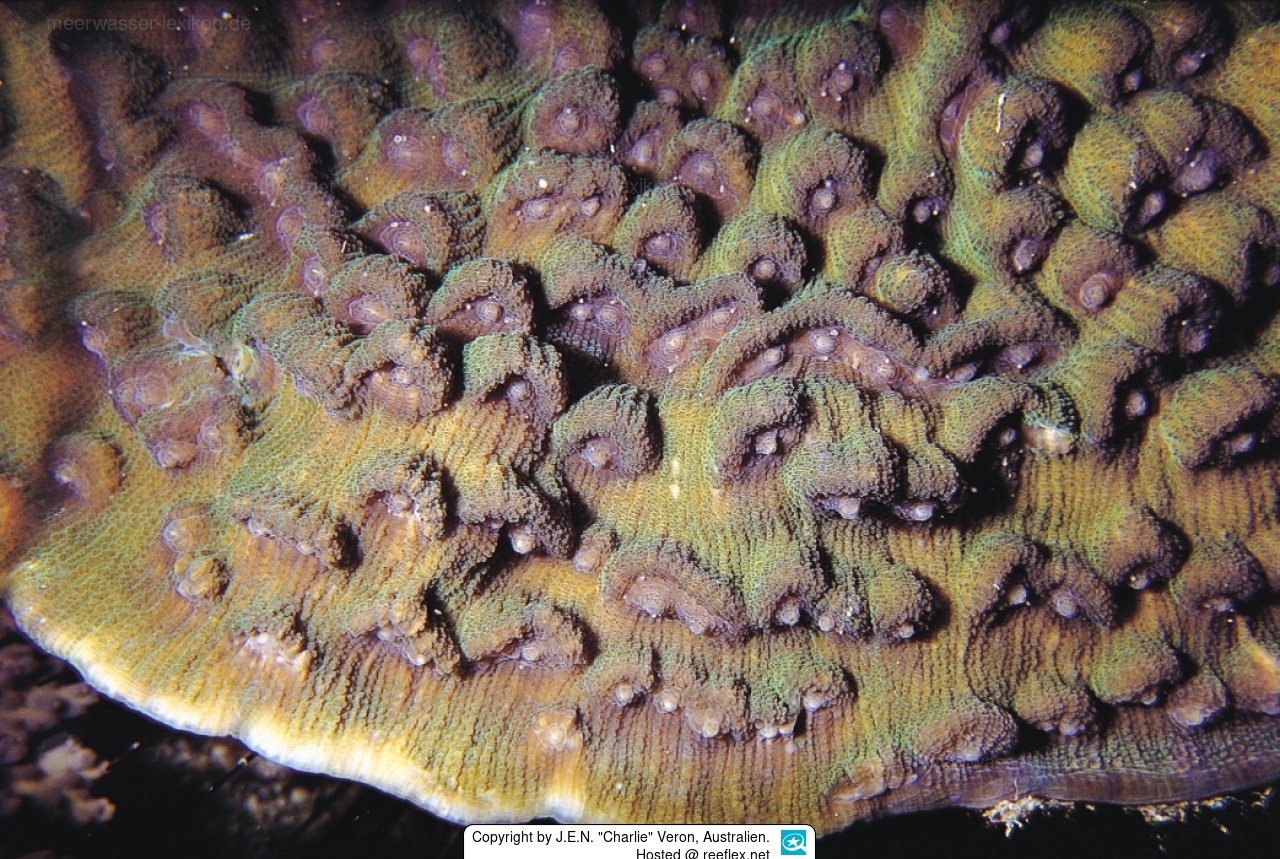Info
Pallas, 1766
Color: Usually a uniform brown, grey, green or pink but may have green, white or red oral discs. Colonies may have distinctively coloured margins.
Mycedium elephantotus is commonly referred to as Green Eyed Cup Coral or Elephant Nose Coral. Difficulty in the aquarium: moyen. A aquarium size of at least 150 Liter is recommended. Toxicity: Toxic hazard unknown.

 Dr. John Edward Norwood "Charlie" Veron, Australien
Dr. John Edward Norwood "Charlie" Veron, Australien
Courtesy of the author Dr. John Edward Norwood "Charlie" Veron, Australien . Please visit www.coralsoftheworld.org for more information.
Uploaded by AndiV.
Image detail
Des élevages de Mycedium elephantotus sont possibles. Malheureusement il y en a pas assez pour le commerce. Si vous vous intéressez pour Mycedium elephantotus demandez a votre commerçant du élevage. Si vous avez déjà Mycedium elephantotus essayez vous même de faire un élevage! Vous pourriez aider au commerce et de protéger la nature.